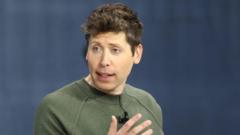Even Adults May Soon Be Vulnerable to ‘Childhood’ Diseases
 Outbreaks among the unvaccinated are a predictable consequence of falling immunization rates. But even vaccinated adults may be vulnerable to some illnesses.
Outbreaks among the unvaccinated are a predictable consequence of falling immunization rates. But even vaccinated adults may be vulnerable to some illnesses.
Read more at The New York Times
-

Childhood vaccination rates, a health bright spot in struggling states, are slipping
Mississippi, Tennessee and West Virginia have some of the highest childhood vaccination rates. Experts worry a rising tide of vaccine skepticism is causing those bright spots to dim.NBC News - 2h -
Adult Bonnets Are The Winter Hat of the Moment
Grown-up versions of the infant staple have become increasingly sought-after.The New York Times - 2d -

L.A.’s Private Firefighters, and U.S. Childhood Vaccination Rates Fall
Plus, remembering a civil rights Freedom Rider.The New York Times - 1d -

‘It’s an enormous emergency’: the doctor saving Sudan’s most vulnerable
MSF medical teams provide vital care in the war-torn country where pregnant women, new mothers and newborns are dying needlessly at alarming rates. Donate to our charity appeal here . In Sudan ...The Guardian - 2d -

Morning coffee may lower risk of heart disease-related death, research suggests
The study did not say why coffee in the morning reduces the risk and whether it was the sole cause.BBC News - 6d -

ChatGPT creator denies sister's childhood rape claim
Ann Altman filed a lawsuit alleging her brother sexually abused her between 1997 and 2006.BBC News - 6d -

Game Pass Dumps These Six Games Very Soon
It's time to go As it does at least one per month, Microsoft is dumping more games from the Xbox Game Pass library in January 2025. The first set of removals for the month have now been ...GameSpot - 6d -
Warnings of vulnerability preceded Bourbon Street attack
More than five years before the Bourbon Street attack, a confidential report distributed to officials in New Orleans warned that a vehicular terrorist attack was "highly possible." The assessment, ...CBS News - 6d -

Dictatorships Will Be Vulnerable to Algorithms
It may seem like a perfect fit: dispassionate software that streamlines the agendas of dastardly regimes. But they’ll find that the tech cuts both ways.Wired - Jan. 3
More from The New York Times
-

RFK Jr.’s MAHA Movement Obscures America’s Unhealthy Past
Medical historians say that the phrase “Make America Healthy Again” obscures a past during which this country’s people ate, smoked and drank things that mostly left them unwell.The New York Times - 19h -

Study Links High Fluoride Exposure to Lower I.Q. in Children
The results of a new federal analysis were drawn from studies conducted in other countries, where drinking water contains more fluoride than in the United States.The New York Times - 5d -

At This Ballet Company, the Priority Is Dancers’ Mental Health
Azara Ballet in Florida is a place where performers can just be themselves.The New York Times - 15h -

Chronic Pain: Five Things We Know About Causes, Treatments and Diagnoses
After developing chronic pain, I started looking into what scientists do — and still don’t — understand about the disease. Here is what I learned.The New York Times - 2d -

Chronic Pain Afflicts Billions of People. It’s Time for a Revolution.
As many as two billion people suffer from it — including me. Can science finally bring us relief?The New York Times - 1d
More in Health
-
Sierra Leone declares emergency after confirming 2nd mpox case in 4 days
Sierra Leone has declared a state of emergency after reporting its second case of mpox in less than four daysABC News - 2h -

At This Ballet Company, the Priority Is Dancers’ Mental Health
Azara Ballet in Florida is a place where performers can just be themselves.The New York Times - 15h -

RFK Jr.’s MAHA Movement Obscures America’s Unhealthy Past
Medical historians say that the phrase “Make America Healthy Again” obscures a past during which this country’s people ate, smoked and drank things that mostly left them unwell.The New York Times - 19h -

Chronic Pain Afflicts Billions of People. It’s Time for a Revolution.
As many as two billion people suffer from it — including me. Can science finally bring us relief?The New York Times - 1d -

Chronic Pain: Five Things We Know About Causes, Treatments and Diagnoses
After developing chronic pain, I started looking into what scientists do — and still don’t — understand about the disease. Here is what I learned.The New York Times - 2d